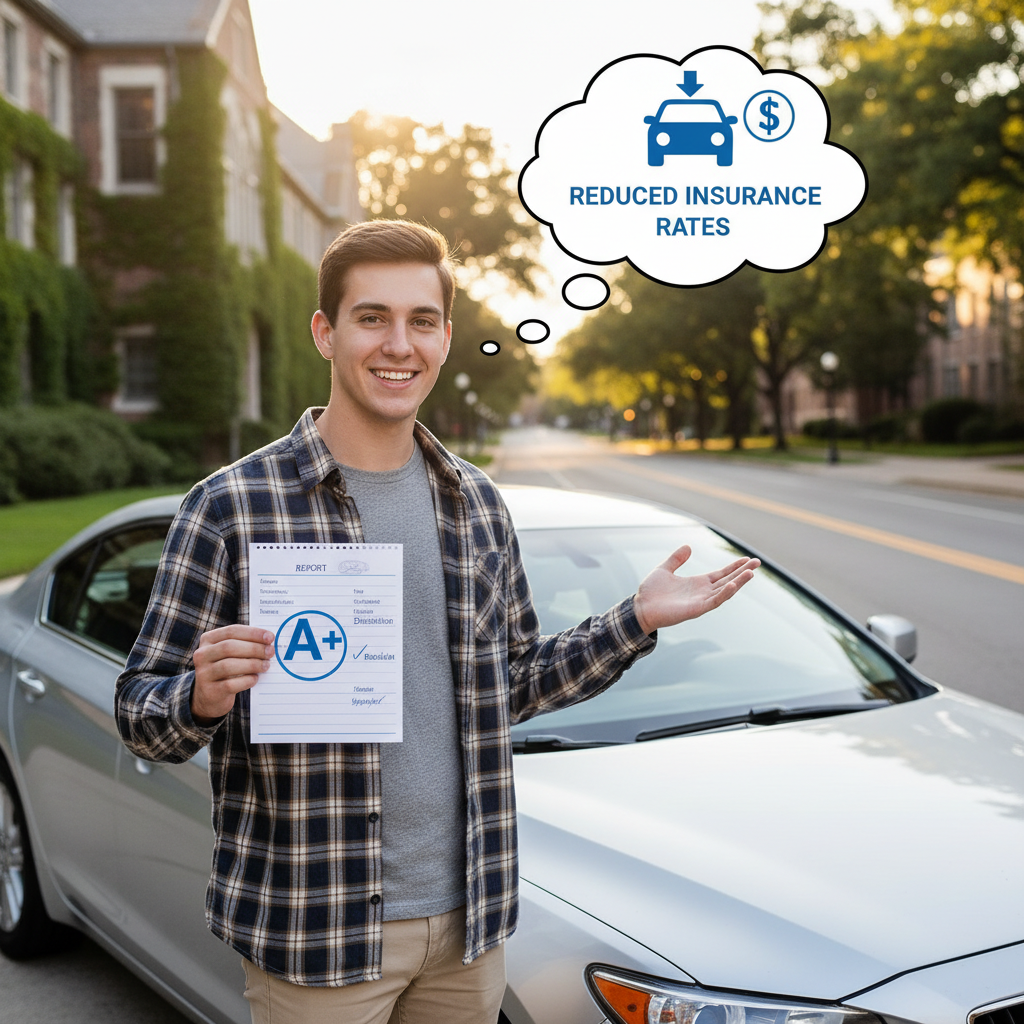From Report Card to Rate Cut: How Savvy Students (and Parents) Score the Best Car Insurance Discounts in 2025
If you’re a student, parent, or both, you might know that car insurance for young drivers can feel like highway robbery. But what if your most recent report card could save you hundreds—if not thousands—on your premium this year? The secret’s out: in 2025, good grades aren’t just for college admissions—they’re your ticket to real-world cash savings. Here’s the step-by-step, no-fluff guide to unlocking the best car insurance discounts for academic overachievers, with every insider detail on how to qualify, apply, and keep the savings rolling year after year.
Contents
Why Good Grades Still Mean Big Savings in 2025
Insurance companies are betting that responsible students make safer drivers. That’s why major insurers—State Farm, GEICO, Allstate, Travelers, USAA, and Country Financial, among others—still offer student good grade discounts ranging from 10% to 35% in 2025.[1][3][7] Some, like Country Financial, are even pushing the top end, offering up to 35% off for students with a 3.0 GPA or higher.[7] With the average annual rate for a college student’s car insurance hovering around $3,799 (GEICO) to $4,668 nationally, these discounts translate to real money—anywhere from $380 to $1,600 a year off.[3]
FOMO Alert: Discounts Aren’t Automatic—And They Can Expire
Here’s what most students (and parents) miss: Even if you qualify, insurers don’t automatically apply student discounts. You need to ask, prove it, and—crucially—keep reapplying every policy period or when your grades change. Miss a deadline, and you’re back to full price—an expensive mistake if you’re not paying attention.[4]

Step-by-Step: How to Qualify for a Good Student Car Insurance Discount
1. Check Your Grades Against Insurer Rules
- GPA Goalposts: Most companies require a minimum 3.0 GPA (B average), or ranking in the top 20% of your class.[1][4][5]
- Age Limits: Discounts usually apply to full-time students ages 16-24 or 25, depending on the insurer.[1][2][3]
- Accepted Proof: Report cards, official transcripts, or proof of being on the dean’s list/honor roll are standard.[1][4]
2. Gather and Submit the Right Documents
- Download your latest report card or transcript from your school portal.
- If you’re in college, get an official enrollment letter if required.
- If you’ve completed a driver’s ed or a safe driving app program (like State Farm’s Steer Clear or Allstate’s TeenSMART), grab those certificates too for stackable savings.[3][4]
3. Contact Your Insurer—And Compare!
| Insurer | Good Student Discount | Best For | Annual Price (Est.) |
|---|---|---|---|
| State Farm | Up to 25% | Large families, multiple discounts | $2,167–$4,223 |
| GEICO | 15% | Budget solo policies | $3,799 |
| Allstate | Flexible, up to 25% | Students with 2.7+ GPA, pay-per-mile | $2,605–$4,998 |
| Country Financial | Up to 35% | High-GPA students | N/A |
| USAA | 10% (military only) | Military families, best rates | Lowest in market |
| Direct Auto | 10% | Single policies, flexible docs | $2,452–$5,572 |
Contact your current agent, or—better yet—use tools like Insurify or AutoInsurance.com to compare real, current quotes. Don’t settle: if your insurer’s discount is less than 10%, or if they make the process a nightmare, let price anchor anxiety push you to switch. In 2025, digital apps make switching (and uploading docs) nearly instant.[1][3]
4. Submit Academic Proof—Online, by App, or In Person
Most major insurers now let you upload grades and certificates via their mobile app or website. Some, like GEICO and State Farm, also accept in-person submissions if you prefer a personal touch.[1][3] Always double-check that your documents are received—and get confirmation in writing. If you’re applying at renewal, don’t wait: submissions often need to be in weeks before your renewal date, or the discount may not apply until the next cycle.[4]

5. Set a Calendar Reminder—So You Never Lose the Discount
Here’s where most people drop the ball: student discounts typically expire at renewal, or when you turn 25. If your grades slip below a B average, the savings vanish. Set recurring calendar reminders—at least a month before every policy renewal—to re-send your latest grades. Don’t let insurers quietly remove your discount due to expired documentation!
Stack Your Savings: Combine Good Student Discounts with Other Deals
- Distant Student: If you’re attending college over 100 miles from home without a car, ask for up to 30% off.[4][5]
- Driver’s Ed/Defensive Driving: Certificates from accredited courses or insurer apps can shave another 5–15% off.[4][3]
- Telematics/Usage-Based Programs: Many insurers offer extra savings for safe driving behavior tracked via phone apps.
Real-World Tips and Pitfalls (from Agents and Parents)
- Don’t Miss Out by Waiting for Renewal: You can often submit proof and get the discount mid-policy.
- Ask About Retroactive Credits: Some insurers may apply the discount back to the start of your policy if you qualify but forgot to mention it.
- Be Wary of Policy Changes: If you switch from a family policy to a solo policy, double-check whether all discounts still apply—and whether your rates jump.
Why Students and Parents Should Act Now
With college costs soaring and inflation hitting every wallet, missing out on student car insurance discounts is like burning money. Rates are rising in 2025, and insurers increasingly reward proactive, tech-savvy customers who know how to document and claim every available deal. Join others who are saving $1,000+ per year—don’t be the one paying sticker price because you didn’t set a reminder, upload a file, or shop around.

Ready to turn your grades into cold, hard cash? Don’t wait for your next bill shock. Check your eligibility today, upload your proof, and keep your family’s budget firmly in the fast lane. Compare quotes, switch if needed—and set those reminders now so you never miss a semester of savings!

